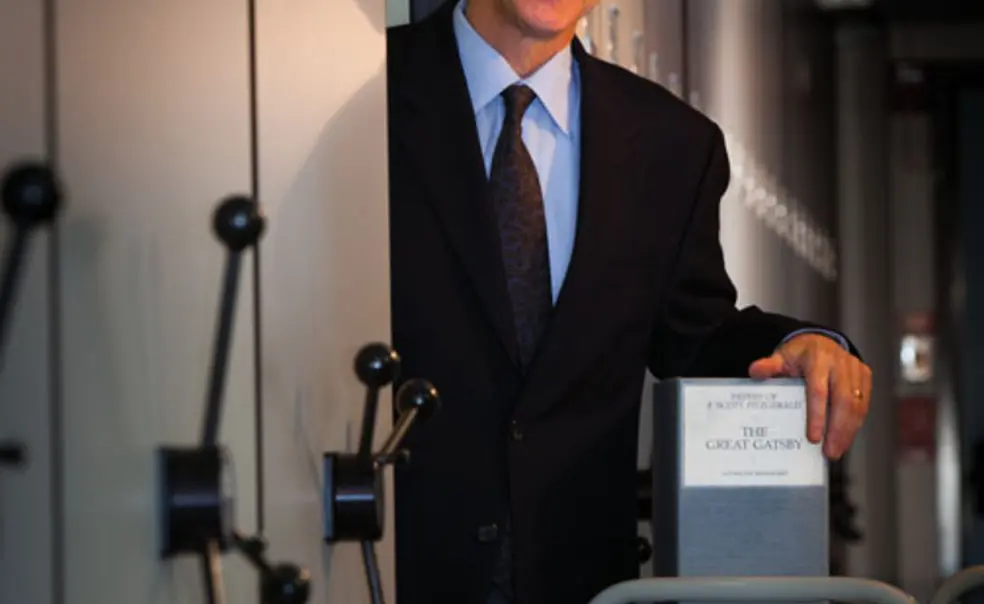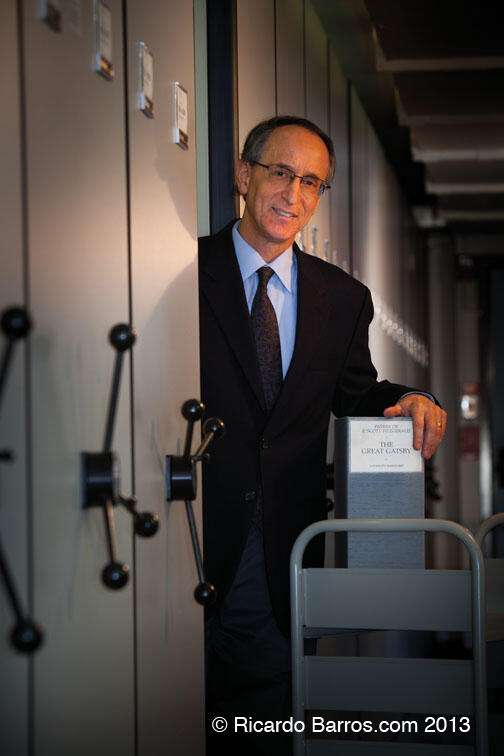A Moment With ... Curator Don Skemer, on F. Scott Fitzgerald ’17
The release of director Baz Luhrmann’s screen version of “The Great Gatsby” in May meant another flood of interest in F. Scott Fitzgerald ’17. As the curator of manuscripts at Firestone Library, Don Skemer oversees the F. Scott Fitzgerald Papers, the literary archive of the “Gatsby” author, and approximately 1,400 other manuscript collections in the Department of Rare Books and Special Collections. He spoke with PAW about hosting a visit by the Hollywood director and why Fitzgerald continues to fascinate.
Baz Luhrmann, the director of The Great Gatsby film, visited Firestone Library in 2011. What did he want to see?
I showed him many things, including the corrected galleys of Trimalchio, an early version of The Great Gatsby. They are heavily edited in Fitzgerald’s hand. It’s one of the great treasures here. Carey Mulligan, who portrays Daisy in the film, came too. She was especially interested in seeing the diary and letters of Ginevra King [a young woman Fitzgerald met when he was 18, who is considered the model for Gatsby’s love, Daisy Buchanan]. Fitzgerald and King had agreed when she got married to destroy each other’s letters. She destroyed his, and he kept hers and later had them typed up.
Click here to view the University’s digitized Fitzgerald manuscripts.
Even when there isn’t a movie coming out, you get a lot of requests about Fitzgerald. Why is he so eternally fascinating to people?
Fitzgerald attracts a lot of interest, always. Right now, it’s every day. I’m a medievalist, but I spend a lot of my time with Fitzgerald.
The Great Gatsby sums up a very atmospheric time in American history. The life he and Zelda lived was like the times — boom and bust. The novel sells 500,000 copies every year. And what we have at Princeton is fascinating — in the manuscript of The Great Gatsby, you can see some of his most famous lines in his handwriting, as well as the lines that might have been. We’re digitizing the manuscript right now. It should be online this summer.
Where is it kept in the library?
In a big, walk-in storage room that’s fireproof and kept at about 67 degrees and 45 percent humidity. It’s our best vault.
What are some of the other rare items in your vaults?
We have the photo albums of author Lewis Carroll, manuscripts from the medieval and Byzantine periods, and handcolored maps created during the American Revolutionary War, to name a few. I’m here for the collections. Serving them — preserving them and providing access to them — is a great privilege.
Luhrmann invited you to the May 1 premiere of the film at Avery Fisher Hall in New York City.
When Baz was leaving, he said to me, “See you at the premiere!” I thought he was kidding. Then I got an invitation.
What did you think of the film?
Movies are never what books are — it would have been silly for me to expect it. In order to achieve a wide audience, they have to take liberties with the text. But our library was in the rolling credits! What more can you ask for? And I saw Jay-Z.
Fitzgerald very much wanted to succeed in Hollywood — he probably would have been thrilled.
Yes, one of Fitzgerald’s biggest disappointments was that he failed in Hollywood, where he lived the last years of his life as a screenwriter for MGM. He worked on Gone with the Wind, but the lines he wrote were never used. In his lifetime, there was only one movie on which he got a screenwriting credit, Three Comrades.
I told Baz, “Fitzgerald was not successful writing for the movies, and his books have never been successful as movies, but I hope this may finally be the one.” I would love to see it happen for once, for Fitzgerald’s sake.
— Interview conducted and condensed by Jennifer Altmann













No responses yet